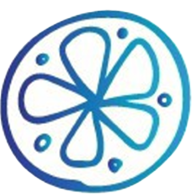Mold infestations can pose serious health risks and structural damage to properties if not addressed properly. A well-structured mold remediation protocol ensures a safe and effective removal process while preventing future mold growth. Whether dealing with a residential or commercial property, following a step-by-step remediation plan is essential.
1. Conduct a Mold Inspection and Assessment
The first step in developing a mold remediation protocol is conducting a thorough inspection to determine the extent of the contamination. This involves:
- Visual Inspection – Checking walls, ceilings, HVAC systems, and crawl spaces for mold growth.
- Moisture Testing – Using moisture meters or thermal imaging cameras to detect hidden moisture.
- Air and Surface Sampling – Collecting samples for laboratory analysis to identify mold species and spore levels.
At Waukesha Mold Inspector we will assess the affected areas to determine the best course of action.
2. Identify and Address the Moisture Source
Mold thrives in damp environments, so identifying and eliminating the moisture source is crucial. Common sources include:
- Leaking pipes, roofs, or windows
- Poor ventilation and high humidity levels
- Flooding or past water damage
Fixing these issues before remediation ensures that mold does not return.
3. Establish Containment Measures
To prevent cross-contamination, containment barriers must be set up. Effective containment strategies include:
- Sealing Off Affected Areas – Using plastic sheeting and negative air pressure to keep mold spores contained.
- Using HEPA Air Scrubbers – Removing airborne spores to maintain indoor air quality.
- Restricting Access – Limiting entry to authorized personnel only.
Containment is particularly important for commercial buildings where air circulation can spread spores quickly.
4. Implement Safe Mold Removal Techniques
The method of mold removal depends on the severity of the contamination:
- Non-Porous Surfaces – Cleaned using EPA-approved antimicrobial agents.
- Porous Materials (Drywall, Carpets, Insulation) – These often require removal and disposal if heavily infested.
- HVAC Systems – Air ducts should be cleaned and disinfected to prevent spore circulation.
All mold removal should follow Occupational Safety and Health Administration (OSHA) and Environmental Protection Agency (EPA) guidelines.
5. Conduct Post-Remediation Verification
Waukesha Mold Inspector will conduct the post remediation testing to determine if the mold levels are within acceptable limits. This includes:
- Visual Inspection – Ensuring all mold and moisture sources have been addressed.
- Air and Surface Testing – Verifying that mold spore levels have returned to normal.
- Clearance Testing – Waukesha Mold Inspector will inspect to confirm successful remediation.
6. Implement Preventative Measures
To prevent future mold growth, follow these maintenance tips:
- Maintain indoor humidity levels between 30-50%.
- Improve ventilation in moisture-prone areas.
- Regularly inspect plumbing, HVAC systems, and roofing for leaks.
- Use mold-resistant building materials in high-risk areas.
Conclusion
A well-structured mold remediation protocol ensures the safe and effective removal of mold in residential and commercial properties. By following a step-by-step approach, including proper inspection, containment, removal, and prevention strategies, property owners can create a healthy indoor environment while avoiding costly future mold problems.
If you have any questions, don't hesitate to give us a call.
